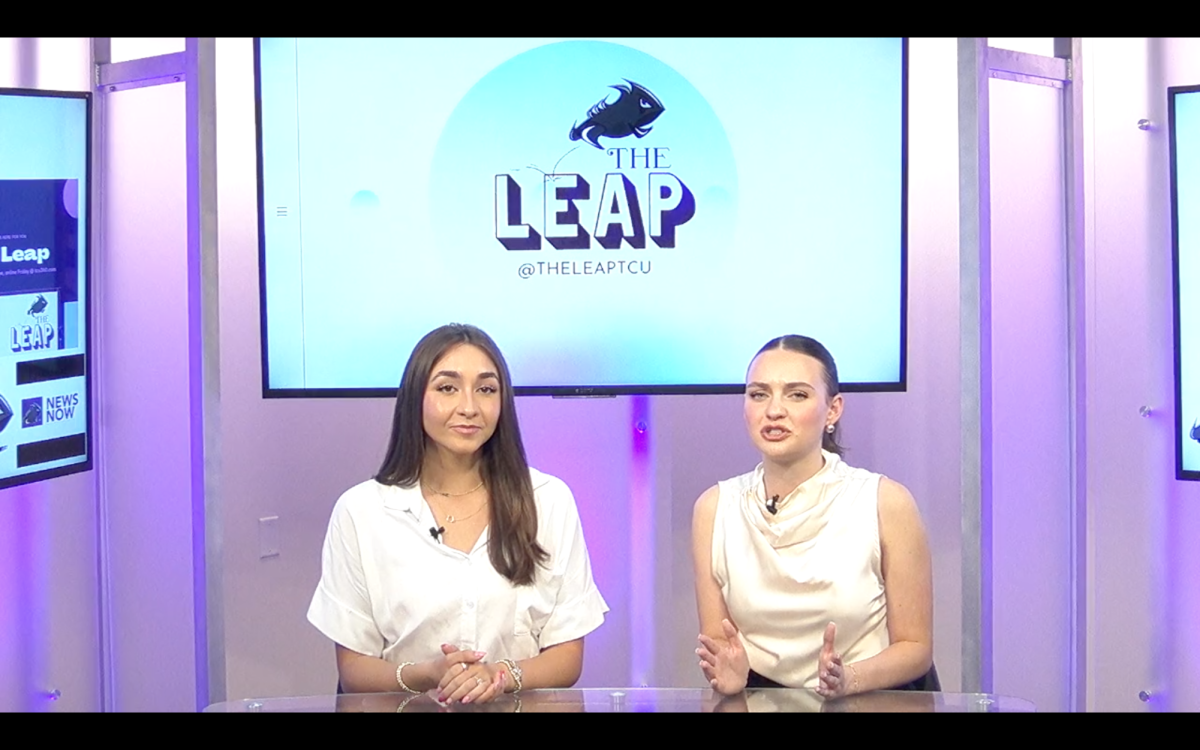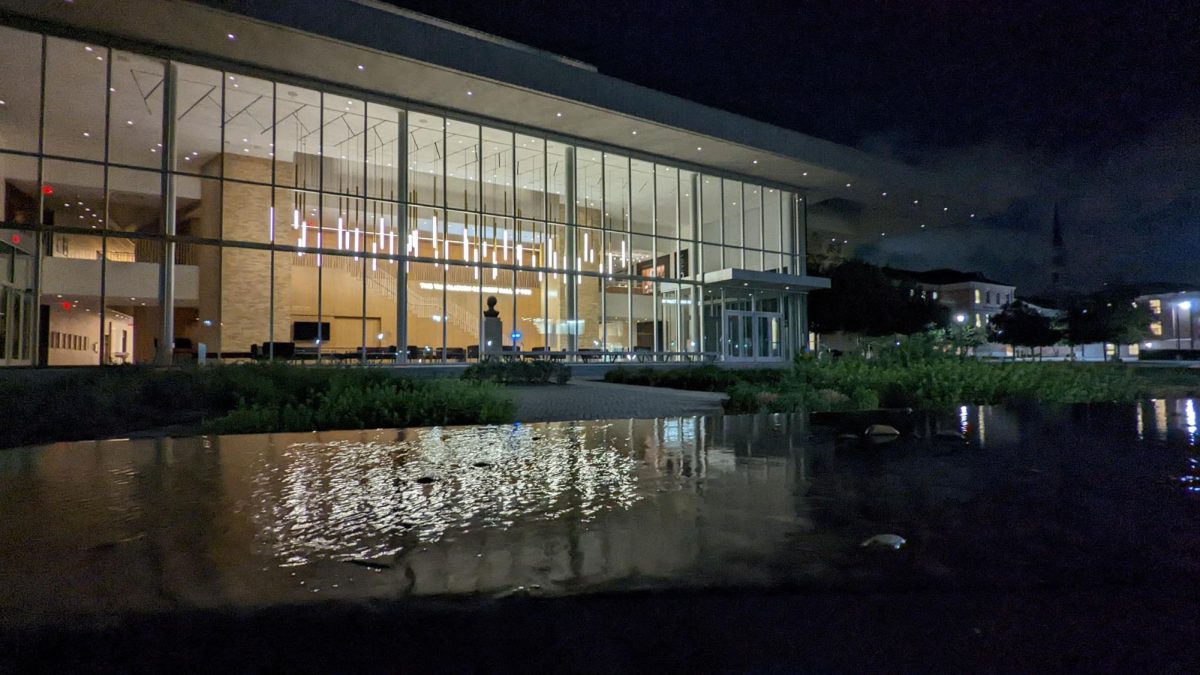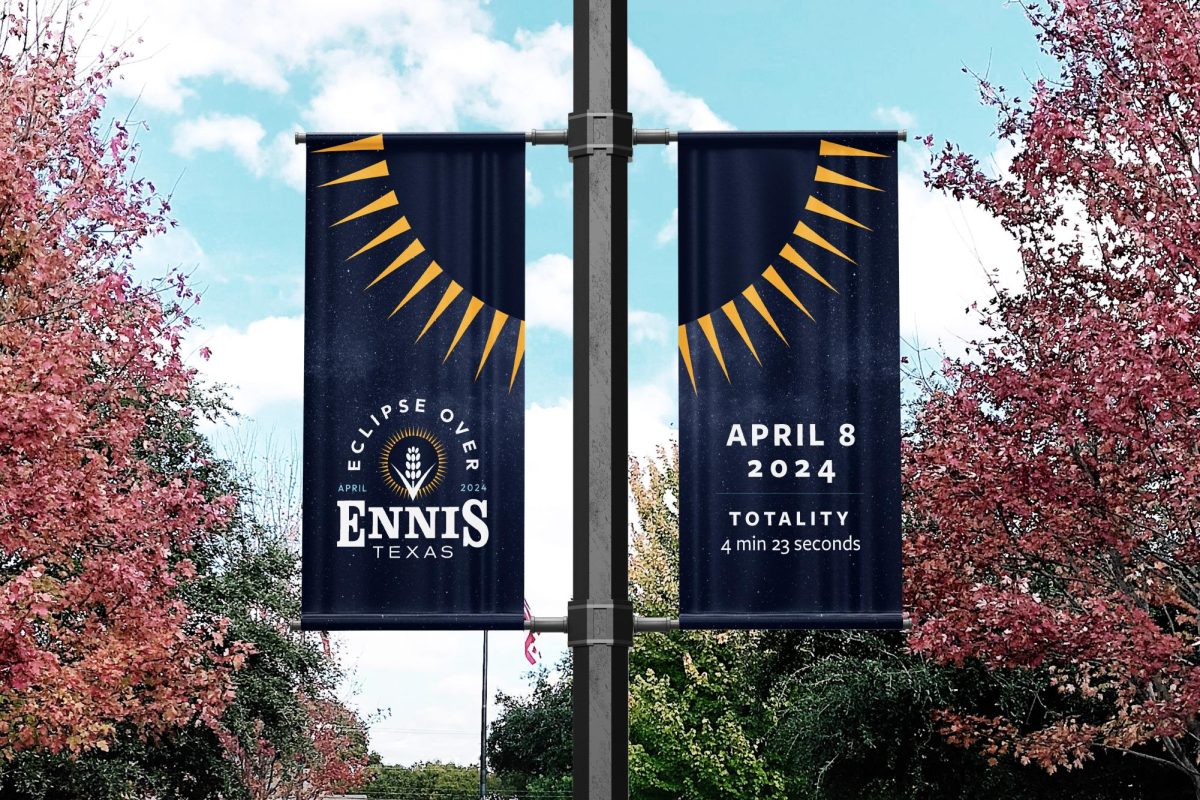It doesn’t have a football team, and most 109ers may not even know this college exists – but the College of St. Thomas More has been quietly creating a tradition of classical learning for three decades now.
Texas Christian University dominates the headlines, but it isn’t the 109’s only institution of higher learning. St. Thomas More exists – literally – in the shadow of TCU on the 3000 block of Lubbock Avenue. And while it’s smaller than any of the 109’s elementary schools, St. Thomas More is seeking to return education back to what its leaders believe are the basics for well-educated graduates.
Dr. James Patrick founded the college in 1981. He believed that the classic liberal arts education that students took in past centuries had gone away, and he wanted to have a school with a curriculum that focused on the liberal arts education.
“We thought 18-year-olds had intellects and minds, and those minds were capable of grasping the truth and what the great tradition contains,” said Patrick, chancellor of St. Thomas More. “And, we love to teach.”
The “classical” liberal arts education focuses on several aspects: first, students must take a classical language, either Latin or Greek, for four years. They also must take four years of philosophy, theology, classical literature, and four years of classical liberal arts. The literature read in courses ranges from the epic poems of Homer to the writings of Faulkner.
Michael King, president of St. Thomas More, said that the school was founded on the basis of going back to what education used to be. The emphasis on the classical education allows students to become better thinkers and learners once they head out into the real world, he said.
“The idea of the school was to go against the grain of where colleges were going,” King said. “Dr. Patrick wanted to make sure there were students in north Texas that had an opportunity to get a classical liberal arts education. In other words, it wouldn’t be diluted with any other academic discipline. It’s sort of a throwback to what colleges were 200 years ago.”
Life at St. Thomas More
The buildings on campus look more like houses than places of learning. The main office building’s door, when opened, triggers a sound on the alarm system, almost like a convenience store.
St. Thomas More is not a large university. Only 21 students are enrolled full-time. They only offer one degree, which is in liberal arts. Students at the school don’t have to worry about class enrollment, however. That’s because everyone takes the same courses. For students that attend the school full-time, they are required to live on-campus until the end of their sophomore year.
There are several members of the staff at St. Thomas More who, after graduation, made their way back to teach or assist in another capacity. Steven Shivone attended the college and graduated in 2001. Shivone taught there for a little over a year, than went to graduate school, before coming back in 2008 as a full-time “tutor” [the school’s name for professors at St. Thomas More].
Shivone, who is in the process of earning his doctorate at the University of Dallas, said the education he received at St. Thomas More helped better prepare him for his ventures into graduate school and beyond.
Shivone said what he most enjoyed about his educational experience at St. Thomas More was the feeling that he was going through the same type of education and teachings that the great writers and thinkers of the past went through in their young years.
“The school was very enriching in a number of different ways,” Shivone said. “I was allowed to study the great books, humanities, philosophy, and classical languages. And when I did enter graduate school, I first studied theology, and I’m in the process of earning a Ph.D. in literature, and I was much better prepared for my studies in my classes than my peers.”
The atmosphere that the College of St. Thomas More has is not unlike that of a tight-knit family. and the learning environment plays a major factor in that, King said.
“It’s always important that your alums maintain contact and form a community,” King said. “Here, it’s even more important because we’re a small. We don’t produce a huge base like a major college. But, our curriculum itself sort of fosters that sort of family mentality among the students while they are here, so they tend to stay in touch.”
Shivone mostly enjoyed the atmosphere at the college, but he was quick to add that it has its disadvantages, like every college or university has.
“The small class size makes the school feel like a family,” he said. “You know your teachers very well. You know your fellow students very well. But, it also has the drawback of being like a family. I would say that it’s a strength and a weakness.”
The Search for Truth
A Catholic institution, the college holds Mass 11 to 12 times every week, although students are not required to attend. The church is located right in the middle of the university, and it’s hard to ignore the loud clangs of the bell that ring on every hour, or the formal attire the students and faculty wear when they are on campus.
The foundation of learning that St. Thomas More bases its teachings on is the search for, and the obtainment of truth. There are multiple senses of truth, according to the college. One is of the learning experience at the college, and the other is the truth of religion. The college attempts to find and guide the students on this path of both truths through the school’s teachings.
King said he believes the religious environment at the college, along with the classical learning style that the college teaches, help create a situation where students can not only grow as a student in the sense of learning, but also grow as a student of faith.
“Back in the medieval period, all universities were religious institutions. The professors back then were all part of the clergy. While we don’t have any clergy teaching here, we like to think that Christ is the center the curriculum, because that’s where truth begins.”
While the basis for the college is the Catholic faith, St. Thomas More is not in the business of converting students. Shivone said the true nature of a university is the ability to for one to think for themselves and come up with their own beliefs and values.
“We’ve had a lot of conversions to Catholicism over the years, and I think it’s because we don’t try to impose it on our students,” Shivone said. “It’s more the air we breathe. We’re a very dedicated Catholic institution, but at the same time, we have atheist and agnostic students, and they feel very comfortable here.”
Although the college is open to people of other faiths, Dr. Patrick said that the ultimate end point of faith is one that is not open to interpretation.
“It’s a formality in which to proceed as the truth,” Patrick said. “That leads you to the truth about God. And the truth about God leads you to the Roman Catholic Church.”
King said he finds the existence of a school like Thomas More, a combination of its open learning style and religious institution, essential for the future of higher education.
“I believe in what the college’s mission is, in terms of the classical liberal arts education,” he said. “In terms of the curriculum, I think it’s more important now than ever as we move along into the modern area, that there’s a place where students who want that, and parents who want to send their children.”





